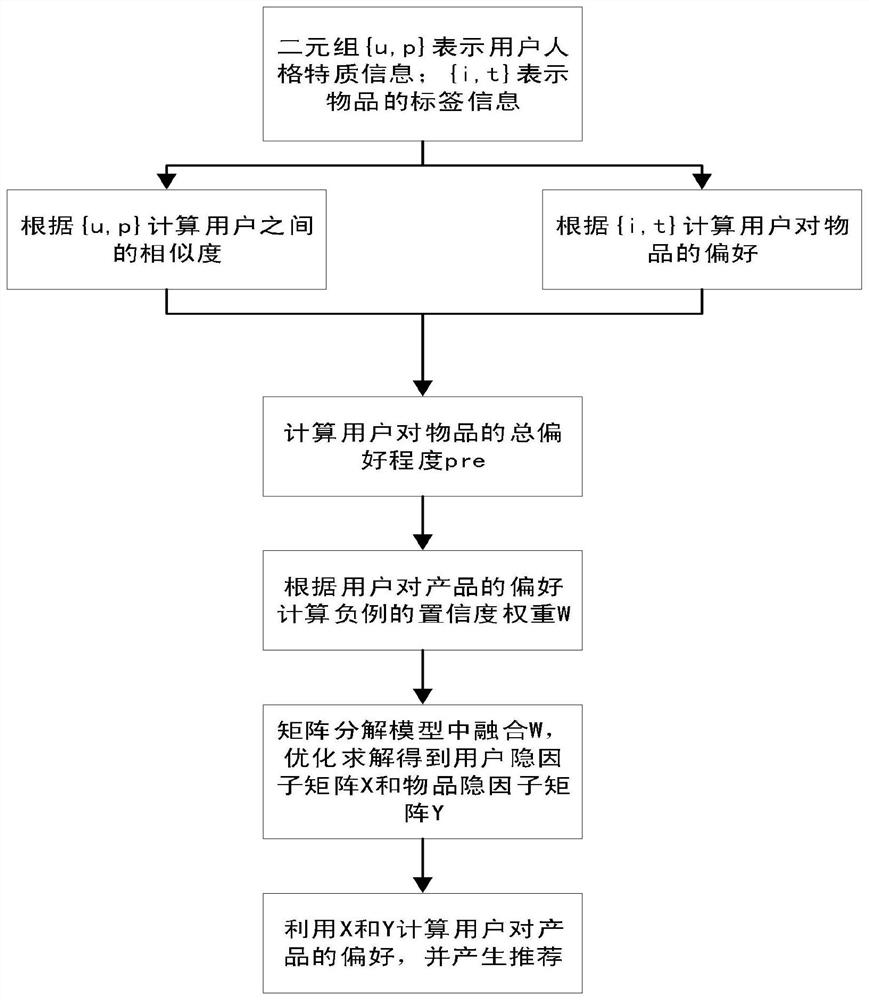A One-Class Collaborative Filtering Method Fused with Personality Traits and Item Labels
A collaborative filtering, single-classification technology, applied in special data processing applications, instruments, data processing applications, etc., can solve the problems of cold start of new users, and achieve the effect of overcoming cold start, overcoming cold start problems, and high reliability
- Summary
- Abstract
- Description
- Claims
- Application Information
AI Technical Summary
Problems solved by technology
Method used
Image
Examples
Embodiment Construction
[0042] In this example, if figure 1 As shown, a single-category collaborative filtering method that combines personality traits and item tags is carried out in the following steps:
[0043] Step 1. Use the two-dimensional table R={u,i} to represent the user’s behavior records on items, use the two-dimensional table P={u,p} to represent the user’s personality trait data, and use the two-dimensional table T={i,tag } represents the tag data of the item; among them, u={u 1 ,u 2 ,...,u n ,...,u |N|} represents the set of users, u n Indicates the nth user, n=1,2,...,|N|, |N| indicates the total number of users; i={i 1 ,i 2 ,...,i m ,...,i |M|} represents a collection of items, i m Indicates the mth item, m=1,2,..., |M|, |M| indicates the total number of items; p={p 1 ,p 2 ,...,p n ,...,p |N|}Represents the information set of user personality traits, p n Indicates the nth user u n personality traits and have: Indicates the nth user u n The jth personality trait of ...
PUM
 Login to View More
Login to View More Abstract
Description
Claims
Application Information
 Login to View More
Login to View More - R&D
- Intellectual Property
- Life Sciences
- Materials
- Tech Scout
- Unparalleled Data Quality
- Higher Quality Content
- 60% Fewer Hallucinations
Browse by: Latest US Patents, China's latest patents, Technical Efficacy Thesaurus, Application Domain, Technology Topic, Popular Technical Reports.
© 2025 PatSnap. All rights reserved.Legal|Privacy policy|Modern Slavery Act Transparency Statement|Sitemap|About US| Contact US: help@patsnap.com



